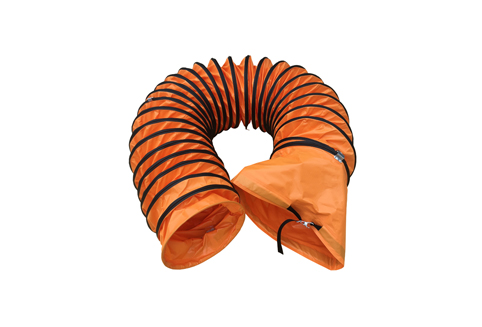E-mail: info@sp-vent.com
2021
The Difference Between Flexible And Metal Duct
The Difference Between Flexible And Metal Duct
A flexible Ducting supplier will share this article with you.
What is a metal duct?
Metal ducts (also called rigid or hard ducts) provide a more permanent solution for commercial HVAC systems. Galvanized steel and aluminum ducting have a longer service life. This is especially true when proper maintenance is performed on a regular basis.
It requires computerized design, measurement, and careful ductwork installation. The experts considered the existing components of the heating and cooling system of the commercial building. These considerations include furnaces, heat pumps, air conditioning, etc.
The aspect ratio of commercial buildings is also a consideration. It should provide space for metal ducts to optimize energy efficiency and performance.
What is a flexible duct?
The flexible duct is an integral part of the air conditioning system. Flexible ducts connect the piping system of the heating and cooling system to the air distribution. It consists of grilles and registers installed on the ceiling or wall of a commercial building.

The flexible duct makes it easy to attach the air outlet to a harder sheet metal duct system. Usually, a long zip tie or metal band clamp is used.
Rubber, PVC, stainless steel, silicone, polyurethane, and neoprene impregnated polyester fabrics are popular flexible duct materials.
Rubber, PVC, stainless steel, and silicone are the best materials for commercial construction under extreme weather conditions. This is because the inherent resistance to heat and cold ensures long-lasting productivity. Rubber and polyurethane have the best abrasion resistance.
In extreme weather, silicon cannot handle internal damage. However, silicon and PVC provide the highest quality for air handling environments. This is because each one provides flexibility for any heavy-duty hose.
How are the designs of ductwork different?
Price. Since metal ducts last longer than flexible ducts, their manufacturing, transportation, and installation costs are higher.
Flexibility. Flexible ducts are more suitable for existing trunk and branch heating and cooling systems. This is because they are more versatile and flexible. Due to the characteristics of steel, metal ducts are more rigid, which makes them ideal for building entire HVAC systems.
Installation. Compared with metal ducts, flex ducts are easier and faster to install. However, this leaves more room for the contractor's mistakes. The contractor mistakes may cost you high energy bills, additional maintenance, or sudden repairs and replacements.
For commercial buildings, a metal duct is an expensive up-front investment, but it saves money by maintaining high indoor air quality and regulating indoor temperature—regardless of the outdoor climate.
Which one is best for your commercial building?
Many contractors have problems with flex ducts because many duct installations and bending are random. The most common problems are:
Kinks and sharp turns
Long, unsupported duct runs
The radial system has an excess number of ducts coming out of the static pressure chamber
Unmeasurable takeoff distance is too close
Additional duct length
Connection tightness and poor sealed
Unsupported butt joints
Although flexible ducts work best for short-term operation in the main and branch systems, metal ducts work best for the entire air distribution system.
Metal ductwork needs the help of HVAC professionals for design, measurement, and installation. The resistance of metal to airflow is also low, and many of the problems listed above have nothing to do with the stiffness of the metal sheet.
The choice depends on what you are looking for in an HVAC system. Factors include location, number of building users, area, etc. Talk to a sheet metal manufacturer or HVAC technician about your commercial building.
+86 757 8881 8835
+86 159 2073 7023
+86 757 8881 8836
66 Funing RD., Fuwan Gaoming, Foshan China
Keywords: Flexible Duct, Heat Resistant Duct, Heat Resistant Duct, Movable Ventilator...
Copyright © Foshan Senpeng Ventilation Co., Ltd. All Rights Reserved Sitemap | Technical Support: 

